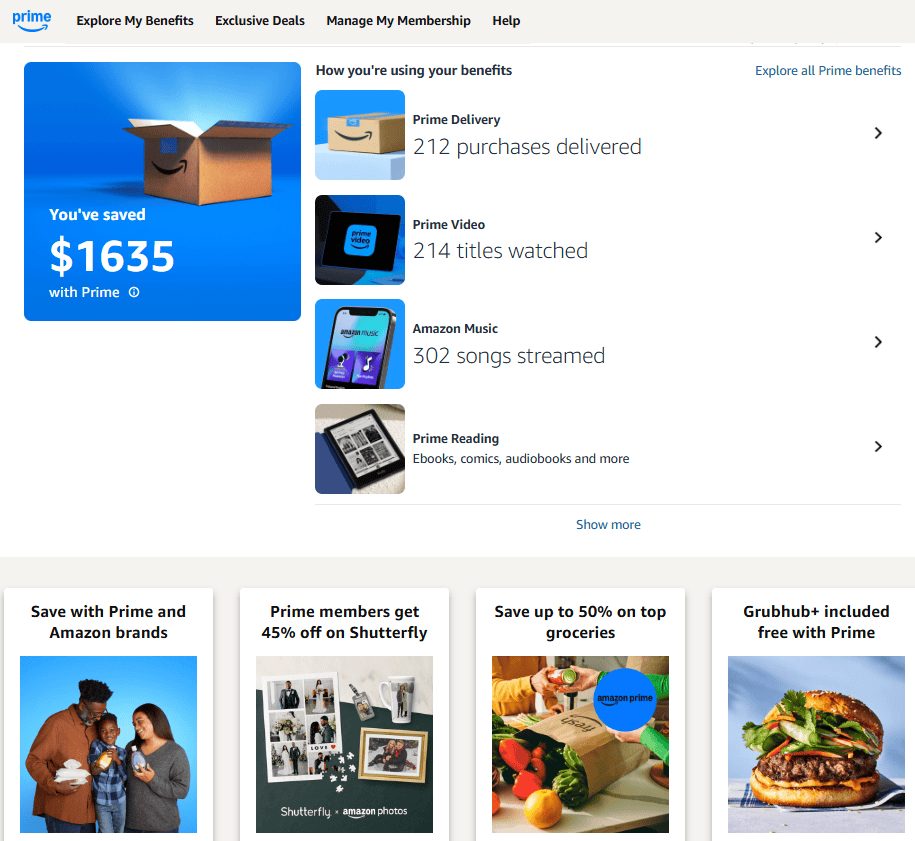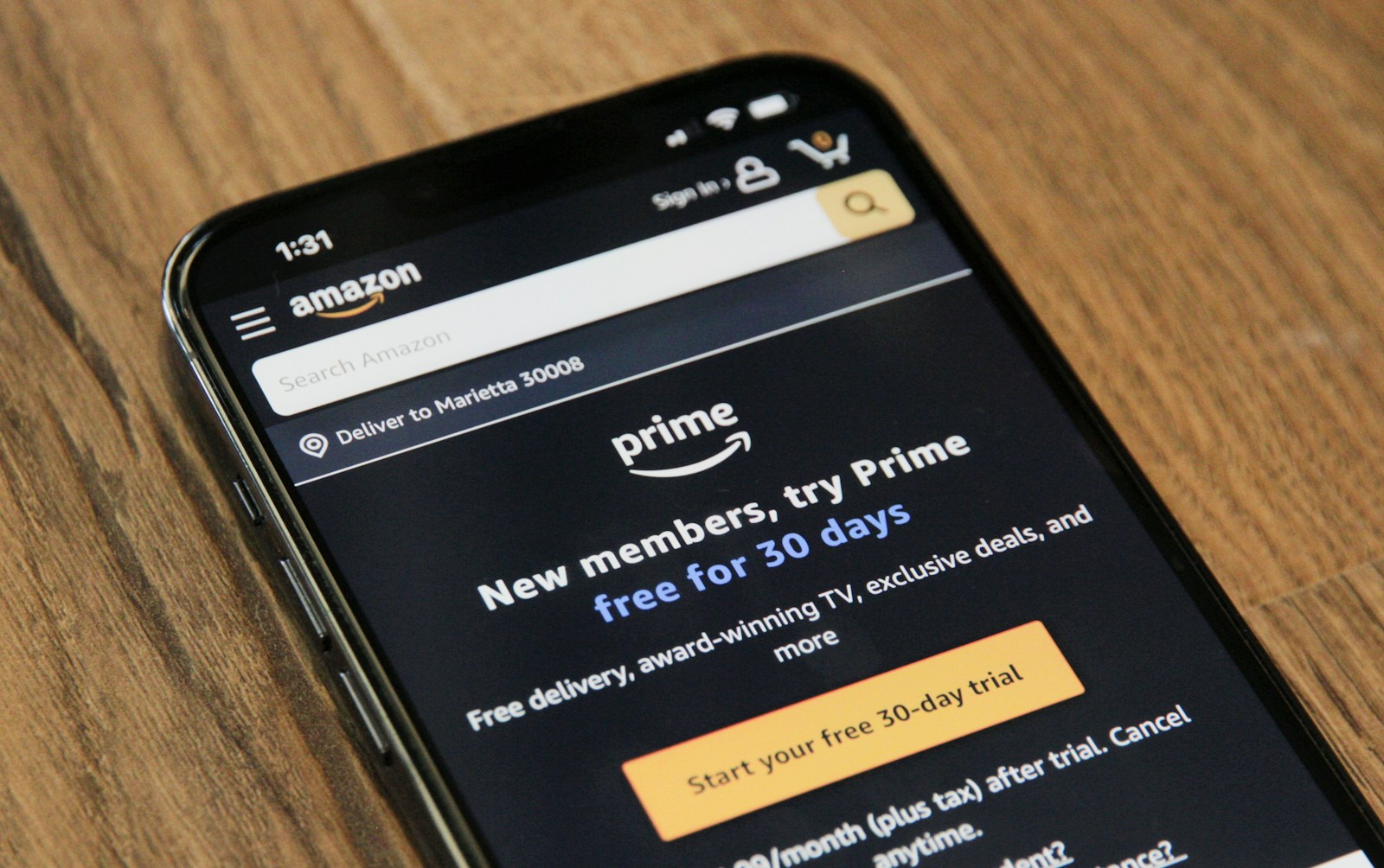Amazon is expected to increase the price of their Prime Membership from $139 annually to $159 by 2026, although some experts are predicting an announcement could come even earlier than that. It should be noted that the company has not made this official yet, but due to rising costs in shipping and fulfillment along with costs rising across the board on all the other offerings that Prime delivers (including streaming) it is long overdue.
This rumor comes on the heels of Netflix announcing price increases coming to all of their membership tiers during their January 2025 earnings call.

Disclosure: Our editors independently select and evaluate products. If you purchase through our links we may earn a small commission that helps support our research.
This price hike for Amazon, if it happens, would follow a pattern of fee increases for Prime falling every four years since 2014 when the service first launched. Since then, Amazon has raised the cost for Prime membership in 4 year cycles from the original $79 (2014) to $119 (2018) to $139 (2022) per year.
If the anticipated price increase to $159 (or more) happens it would mean that the cost of the Prime membership service will have doubled since its initial offering. Amazon’s history of regular price adjustments reflects the changing value proposition of Prime membership. As the company expands its services and benefits, it periodically reviews its pricing structure to maintain profitability while providing value to subscribers.
This strategy enables Amazon to invest in new features and enhance existing ones. Subscribers should consider how a potential price increase might impact their budgets. The rumored $159 annual fee would represent a $20 increase from the current rate. While this might seem significant, many users find that the benefits of Prime membership outweigh the cost, especially those who frequently use Amazon’s services.
Understanding Potential Amazon Prime Price Hikes
Amazon Prime Membership: A Look at Past Price Changes
Amazon Prime has become a staple for many households. It offers benefits like fast shipping, streaming video, and music. But the price of this service has changed over time. Let’s look at the history of these changes:
- 2005: Amazon Prime launched at $79 per year.
- 2014: The price increased to $99 per year.
- 2018: The price went up to $119 per year.
- 2022: The price rose to $139 per year, with the monthly option changing to $14.99.
- 2025/2026: Rumored increase coming to $159 per year (not confirmed)
This pattern shows that Amazon has raised Prime prices roughly every four years. The most recent increase was in 2022. This makes some people wonder if another price hike is coming soon.
Factors That Could Lead to Price Increases
Several things could cause Amazon to raise Prime prices again. These include:
- Rising Costs: The cost of shipping, labor, and content (like movies and TV shows) keeps going up. Amazon may pass some of these costs on to customers.
- Investment in New Services: Amazon is always adding new features to Prime. This includes things like more streaming content and faster delivery options. These improvements cost money, which could lead to price increases.
- Competition: Other streaming and retail services are also increasing their prices. This could give Amazon more room to raise its prices as well.
- Inflation: The general rise in prices across the economy can also push Amazon to raise prices to maintain its profit margins.
What Prime Offers for the Price
Even with past price increases, Amazon Prime still offers a lot of value. Here are some key benefits:
- Fast, Free Shipping: Prime members get free two-day shipping on many items. Some areas even have same-day delivery.
- Prime Video: This streaming service offers movies, TV shows, and original content.
- Amazon Music Prime: This gives you access to millions of songs.
- Other Benefits: Prime also includes things like free ebooks, photo storage, and exclusive deals.
Comparing Prime to Other Services
It’s useful to compare Amazon Prime to similar services to see its value.
| Service | Annual Price (Approx.) | Key Benefits |
|---|---|---|
| Amazon Prime | $139 | Fast shipping, streaming video/music, other perks |
| Walmart+ | $98 | Free shipping, fuel discounts, grocery delivery |
| Netflix (Standard) | $15.49/month ($185.88/year) | Streaming movies and TV shows |
| Spotify Premium | $9.99/month ($119.88/year) | Ad-free music streaming |
This table shows that Prime offers a bundle of services for its price. Other services focus on specific areas like streaming or shipping.
Is Prime Still Worth It?
Whether Prime is worth it depends on how much you use its benefits. If you use the fast shipping often and enjoy the streaming content, it can be a good value. If you only use one or two features, you might want to think about if the cost is justified.
Future Predictions
Given past trends, it’s reasonable to expect another Amazon Prime price increase in the coming years. The exact timing and amount are unknown. However, factors like rising costs and investment in new services suggest that prices are unlikely to stay the same forever.
Considering Other Options: Amazon’s Standalone Services
If the bundled cost of Amazon Prime becomes less appealing due to potential price increases, it’s helpful to know that many of its components can be accessed separately. For example, you can subscribe to Prime Video without being a full Prime member. This allows you to pick and choose the services you want, potentially saving money if you don’t use all the Prime benefits. Amazon Music Unlimited is another standalone option, offering a larger library of music than the Prime Music tier included in the Prime membership. This a la carte approach gives consumers greater control over their spending and allows them to customize their entertainment and shopping needs without committing to the full Prime package.
Key Takeaways
- Amazon Prime’s annual fee may rise to $159 by 2026, continuing a trend of increases every four years
- The current $139 annual fee represents a $60 increase from the 2014 price of $79
- Subscribers should weigh the potential price hike against the value they receive from Prime membership
Historical Prime Membership Fee Changes
Amazon Prime has become increasingly popular and offers various benefits for an annual fee, which has risen over the years and may increase again due to factors like rising costs and competition. It’s important for users to assess whether the benefits meet their individual needs and consider alternatives, as some Prime services are available separately. The subscription costs have steadily increased since the service’s launch, reflecting expanded benefits and higher operational expenses.
Assessing Past Price Hikes
Amazon introduced Prime in 2005 at $79 per year. The first price increase came in 2014, raising the annual fee to $99. In 2018, Amazon hiked the price again to $119. The most recent increase occurred in 2022, bringing the yearly cost to $139.
Monthly subscription options emerged in 2016, starting at $10.99. This rate rose to $12.99 in 2018 and $14.99 in 2022. Prime Student memberships have also seen price increases, though at a lower rate than standard subscriptions.
These price adjustments typically coincide with expansions in Prime benefits. Amazon has added services like Prime Video, Prime Music, and Prime Reading over the years. The company cites rising shipping and digital content costs as reasons for the increases.
Implications of the Potential Price Increase
A potential Amazon Prime price hike to $159 per year would impact members’ wallets and Amazon’s competitive position. This change could reshape the value proposition for subscribers and alter the streaming service landscape.
Impact on Prime Members
Prime members may face a tough decision if Amazon raises prices. The $20 increase would mean paying $13.25 per month, up from $11.58. Some subscribers might reassess the value of their membership.
For frequent Amazon shoppers, the free shipping benefit could still justify the cost. But occasional users might struggle to see the value. Prime Video, Music, and other perks would need to deliver more to retain price-sensitive customers.
Members on tight budgets may look for ways to save:
- Switching to monthly payments ($14.99/month currently)
- Sharing accounts with family members
- Using student or low-income discounts
Comparative Analysis with Competitor Services
A Prime price hike could shift the competitive landscape for e-commerce and streaming services.
Walmart+ costs $98/year, offering free shipping and some video content. At $159, Prime would be 62% more expensive. This gap might push some shoppers to switch.
Netflix’s standard plan is $15.49/month or about $186/year. Prime Video, included with Prime, would remain cheaper. But the gap would narrow, potentially affecting Prime’s perceived value.
Other streaming services to compare:
- Hulu: $7.99/month with ads
- Disney+: $7.99/month
- HBO Max: $15.99/month
Prime’s mix of shipping and content makes direct comparisons tricky. But a higher price could make customers more likely to consider alternatives.
Potential Benefits for Amazon
A price increase could boost Amazon’s revenue significantly. With over 200 million Prime members worldwide, even a small uptick in price translates to billions in extra income.
This additional cash could fund:
- Improved shipping speed and reliability
- More original content for Prime Video
- Enhanced Prime benefits like expanded grocery delivery
Amazon might use the extra money to strengthen its competitive position. Investing in logistics could widen its lead over retail rivals. Boosting Prime Video content could help it compete with dedicated streaming services.
The company could also use the funds to offset rising costs in areas like labor and fuel. This could help maintain profit margins without sacrificing service quality.
Frequently Asked Questions
Amazon Prime members have several questions about potential price increases and membership details. Here are answers to common inquiries about Prime pricing, announcements, and membership options.
What is the anticipated cost of Amazon Prime membership in 2025?
Amazon has not officially announced any price changes for 2025. Based on past patterns, some analysts speculate the annual fee could reach $159 by 2026. However, this is only speculation and not confirmed by Amazon.
Are there any official announcements from Amazon regarding a Prime fee increase by 2026?
As of January 2025, Amazon has not made any official statements about Prime price increases for 2026. The company typically announces changes a few months before implementing them.
What are the reasons behind the periodic increases in Amazon Prime subscription fees?
Amazon cites rising costs for shipping, streaming content production, and other Prime benefits as reasons for fee increases. The company invests in expanding services and improving delivery speeds, which impacts operational expenses.
Does Amazon offer discounted Prime membership for seniors or other demographic groups?
Amazon offers discounted Prime memberships for students and individuals with valid EBT or Medicaid cards. As of 2025, there is no specific discount for seniors. Eligible customers can access lower rates through these programs.
How can members be notified about upcoming changes to Amazon Prime pricing?
Amazon typically notifies members via email about pricing changes. Members can also check their account settings or the Prime membership page for updates. The company usually provides advance notice before implementing new rates.
What previous patterns of Amazon Prime price changes suggest about future rates?
Amazon has raised Prime prices roughly every four years since 2014. The fee increased from $79 to $99 in 2014, then to $119 in 2018, and $139 in 2022. This pattern suggests another increase could occur around 2026, but it’s not guaranteed.







